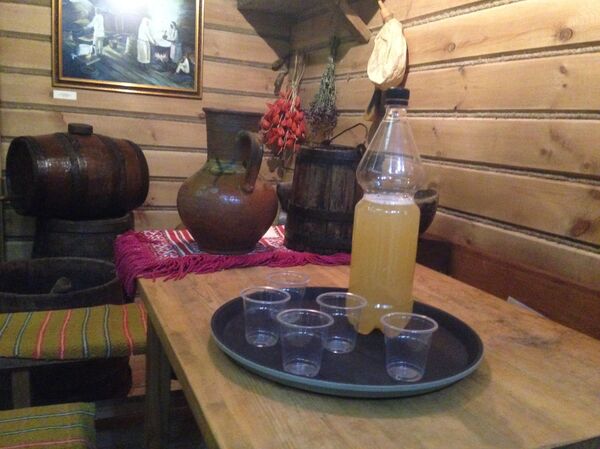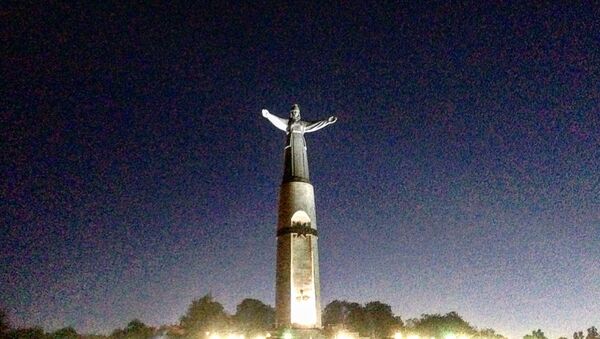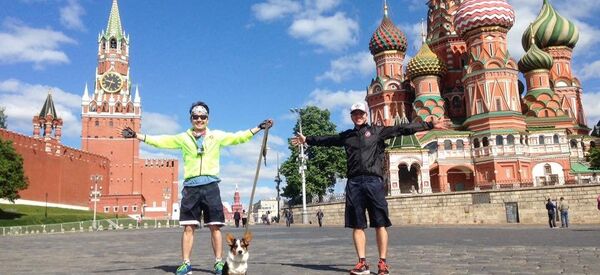Truth be told, the city is indeed well-maintained and comfortable. The first thing one notices when in Cheboksary is just how green the city is. Thanks to numerous parks, a beautiful harbor on the Volga River and the fresh air Cheboksary is also known as the Pearl of the Volga.
Cheburashka, a famous Russian children’s cartoon character, is apparently from Cheboksary, a local resident, Valentina Antoshina, told me as a local joke. Soviet writer Eduard Uspenskiy created Cheburashka, an unknown baby-animal with big ears and a body that resembles a bear cub, in the 1960s and since then Cheburashka became an iconic Russian animation hero.
The Ethnic Character and the Cultural Wealth of the Chuvash Republic
The Chuvash Republic has two official languages, Chuvash and Russian. All road signs, government offices and public buildings have writings in the two official languages, in accordance with the republic’s constitution.
Chuvash is the native language of the Chuvash people. Although the language belongs to the Turkic family, speakers of other Turkic languages cannot understand Chuvash. Some claim Chuvash was derived from Bulgar and Khazar, the two extinct languages spoken by ancient nomadic tribes that lived in the Volga region.
As for the Chuvash people themselves, there are two main theories about their origin. The first theory claims that the Chuvash people originated as a result of amalgamation between ancients Turkic tribes of Volga Bulgaria who lived on the territory of the modern Chuvash Republic.
“I think Bulgars and us [the Chuvash] are of the same blood,” Anastasia Ivanova, a local student from the Cheboksary State University, told me during our walk along the harbor.
According to the second theory, the Chuvash people lived in the Volga region long before the migration of Volga Bulgar populations. It’s hard to tell which theory is right, but one thing is certain – the Chuvash have managed to keep their fascinating culture and language alive, despite always living near much more powerful neighbors.
“The Chuvash people are modest people,” the expression I heard several times during my visit of the Chuvash Republic.
It’s an interesting saying that might explain the origin of the word Chuvash. Apparently, in some Old Turkic dialects the word Chuvash came from “javas,” which meant “peaceful” and/or “friendly.”
While in Cheboksary, we met with a group of guys from a local youth committee who gladly agreed to show us around the city.
The first place they took us to was the monument of Mother Patroness of Chuvashia, one of the main landmarks of Cheboksary. The 46-meter tall monument built in 2003 symbolizes the revival of the Chuvash people’s spiritual values.
“Blessed are all my children who leave in peace and love,” a label on the bottom of the monument says in Russian and Chuvash.
After seeing the colossal Mother Patroness monument, we headed to the museum of beer. For centuries, beer played a key role in the Chuvash culture. But the Chuvash call “beer” in their language a biologically active beverage full of nutrients, not the alcoholic beverage with preservatives that one finds at stores today. The main difference between the traditional Chuvash beer and beer that one buys today at store-shelves is that due to active ingredients the former can only be consumed within 24 hours. Most beer that people buy today isn’t even beer, but an artificial drink with no real nutritional value, a museum guide explained.

The beer that the Chuvash people brew has many health values and nutritional benefits. Every Chuvash household brews their own beer. That’s why everyone in the Chuvash society, including women and small children, consumed the beverage. In this sense, the traditional Chuvash beer has played a similar role as Kumys to the cultures of the peoples of the Central Asian steppes.
The Chuvash Republic is worth visiting. Its relatively close proximity to Moscow makes it possible to visit Cheboksary over a long weekend during which one can enjoy the fresh air, the breathtaking scenery of Volga and get away from Moscow’s stressful and busy routine.



